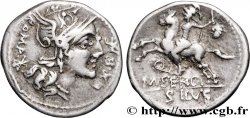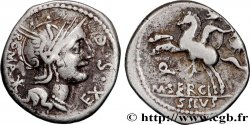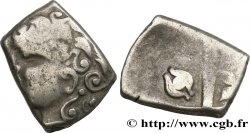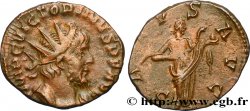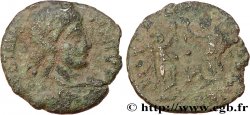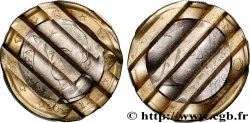E-auction 197-127014 - brm_345720 - SERGIA Denier
Usted debe firmar y ser un comprador aprobado para pujar, Inicia sesión para pujar. Las cuentas están sujetas a la aprobación y el proceso de aprobación se alcanzan dentro de las 48 horas. No espere hasta el día en una venta se cierra el registro.Al hacer una oferta en este artículo usted está firmando un contrato jurídicamente vinculante para comprar este artículo y haga clic en «oferta» constituye una aceptación de los términos de uso de e-auctions de cgb.fr.
La subasta debe ser colocado en euros enteros cantidades venta only.The se cerrará en el momento en la descripción del artículo, no se ejecutarán las ofertas recibidas en el sitio después de la hora de cierre. Veces Transmition pueden variar y las ofertas pueden ser rechazadas si espera a los últimos segundos. Para más información envie el FAQ.
SIN GASTOS PARA LOS COMPRADORES.
SIN GASTOS PARA LOS COMPRADORES.
| Valoración : | 145 € |
| Precio : | 101 € |
| Oferta más alta : | 101 € |
| Fecha de fin de la venta : | 23 enero 2017 14:19:00 |
| participantes : | 10 participantes |
Tipo : Denier
Fecha: 116-115 AC.
Nombre del taller / ciudad: Roma
Metal: plata
Milésimas de pureza : 950 ‰
Diámetro: 18 mm
Eje de acuñación: 8 h.
Peso: 3,82 g.
Comentarios sobre el estado de conservación:
Exemplaire sur un flan ovale, bien centré. Beau portrait de Rome. Frappe un peu molle au revers. Patine de collection ancienne
N° en los catálogos de referencia :
Anverso
Titulatura del anverso: [ROMA]/ EX. S. C..
Descripción del anverso: Tête casquée de Rome à droite ; derrière la tête, marque de valeur, (XVI en monogramme).
Traducción del anverso: “Roma/ Ex senatus consulto”, (Rome/ par décret du Sénat).
Reverso
Titulatura del reverso: Q/ M. SERGI// SILVS.
Descripción del reverso: Cavalier casqué bondissant à gauche, brandissant une épée et tenant de la main gauche une tête coupée et de la main droite, un bouclier.
Traducción del reverso: “Quæstor/ Marcus Sergius Silus”, (Questeur/ Marc Sergius Silus).
Comentario
Pour ce type, M. Crawford a relevé une estimation de 287 coins de droit et de 359 coins de revers. Nous avons trois variétés, une avec une petite tête, la seconde avec un buste plus large et la troisième identique à la deuxième mais sans marque de valeur. Ce type de denier a été imité en Europe Centrale, imitation hongroise (KO = LT. 10120), hybride d’un denier de la gens Fabia pour le droit et de la gens Sergia pour le revers. Le type avec la tête coupée se rencontre assez souvent dans le monnayage celtique. Les guerriers gaulois coupaient les têtes de leurs adversaires et les attachaient à la crinière de leurs chevaux.
For this type, Mr. Crawford noted an estimate of 287 right dies and 359 reverse dies. We have three varieties, one with a small head, the second with a larger bust and the third identical to the second but without a value mark. This type of denier was imitated in Central Europe, Hungarian imitation (KO = LT. 10120), hybrid of a denier of the gens Fabia for the right and the gens Sergia for the reverse. The type with the severed head is found quite often in Celtic coinage. Gallic warriors cut off the heads of their opponents and attached them to the manes of their horses
For this type, Mr. Crawford noted an estimate of 287 right dies and 359 reverse dies. We have three varieties, one with a small head, the second with a larger bust and the third identical to the second but without a value mark. This type of denier was imitated in Central Europe, Hungarian imitation (KO = LT. 10120), hybrid of a denier of the gens Fabia for the right and the gens Sergia for the reverse. The type with the severed head is found quite often in Celtic coinage. Gallic warriors cut off the heads of their opponents and attached them to the manes of their horses







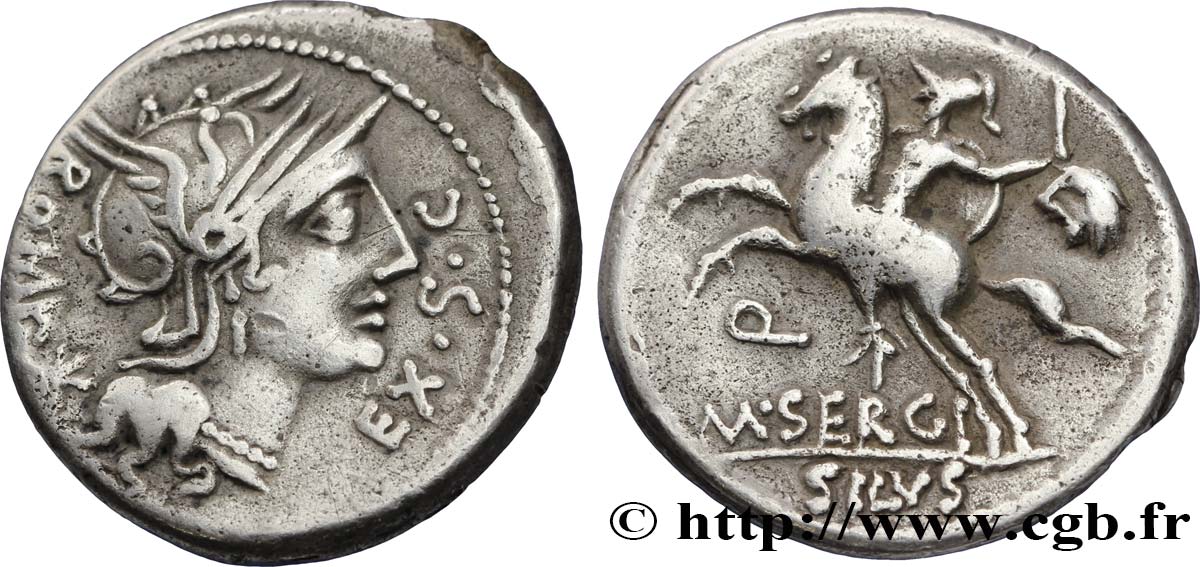
 Informar de un error
Informar de un error Imprimir la página
Imprimir la página Comparte mi selección
Comparte mi selección Haz una pregunta
Haz una pregunta Consignar / vender
Consignar / vender
 Descriptivo
Descriptivo
